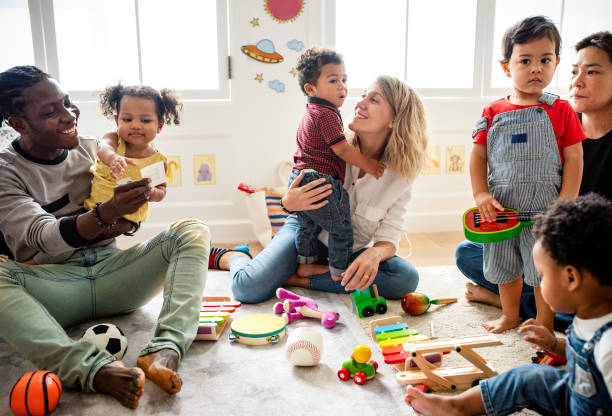Imagine this: You’re at the playground, watching your little one navigate the jungle gym with wide-eyed wonder. Suddenly, another toddler swoops in, and there’s a standoff over a coveted swing. Sound familiar? As moms, we know these moments are a part of growing up, but they also highlight the importance of teaching our toddlers social-emotional skills. How can we nurture their ability to share, empathize, and express emotions in a way that’s fun and engaging?
Welcome to She Is A Good Mommy Blog, where we get it—every mom wants to raise a kind, emotionally intelligent child. That’s why we’ve rounded up over 20 amazing activities designed to help your little one thrive socially and emotionally. From interactive games to creative play ideas, this collection is all about turning everyday moments into learning opportunities.
Ready to dive into a world of activities that will make both you and your toddler smile? Save this article, and let’s embark on this heartwarming journey together!
1. Playful Emotion Cards
![]()
Engaging toddlers in social-emotional activities can be both fun and educational. A fantastic way to start is by using playful emotion cards. These cards illustrate various emotions, helping little ones identify and understand feelings. Picture a rainy afternoon; instead of resorting to screen time, you can pull out a set of these cards. As a mom, I found them incredibly useful when my son was frustrated because he couldn’t articulate his emotions. We’d sit together, and I’d ask, “How do you feel today?” His eyes would light up as he pointed to the ‘happy’ card after a fun playdate or ‘sad’ when his favorite toy broke.
Here’s how you can get started:
- Begin by introducing the cards during calm moments.
- Encourage your toddler to pick a card that matches their feelings.
- Discuss the emotion and relate it to a story or experience.
Benefits include improved emotional vocabulary for your child and a deeper understanding of their emotional world for you. This activity also opens up channels for better communication. 🌟
Remember, the goal is to make emotions less daunting and more approachable. By integrating playful emotion cards into daily routines, you create a nurturing space where feelings are acknowledged and respected. Feel empowered knowing you’re fostering emotional intelligence in your little one, one card at a time! 💞
2. Calming Breathing Games

Picture a typical afternoon: the toys are scattered, and your toddler is on the verge of a meltdown. This is where calming breathing games come to the rescue. As a mom, I’ve found that incorporating these activities into our daily routine can transform chaos into calm. 🎈
Begin by introducing a simple breathing game like “Belly Breathing.” Have your child lie down and place a small stuffed animal on their tummy. Instruct them to take slow, deep breaths to make the toy rise and fall. This not only captivates their attention but also teaches them body awareness.
Another effective technique is blowing bubbles. Encourage your toddler to take deep breaths before gently blowing. This playful activity helps regulate their breathing and reduces stress.
- Model the breathing exercise first. Kids love to imitate! 🐒
- Use descriptive language, like “breathe in like you’re smelling a flower, breathe out like you’re blowing out a candle.”
- Practice regularly, especially during calm moments, so it becomes second nature during stress.
These breathing games not only soothe your child but also provide you with a moment of peace and connection. Remember, patience is key, and with each breath, you’re both learning to navigate emotions more effectively. You’re doing an amazing job! 🌟
3. Feelings Matching Game

One creative way to help toddlers understand emotions is through a “Feelings Matching Game.” Think of it as a fun twist on the classic memory game, but with a meaningful emotional touch. Gather some index cards and draw or print out simple faces showing different emotions like happy, sad, angry, and surprised. My toddler loves when I add a few silly faces too, like a tongue-out emoji! 🎨
Here’s a step-by-step guide to get started:
- Prepare two sets of cards with matching emotions.
- Shuffle and lay them face down on a table.
- Take turns flipping two cards over, aiming to find a match.
- Discuss what each emotion might feel like and relate it to a real-life situation.
This game not only helps toddlers recognize emotions but also opens up conversations about feelings in a playful context. As a parent, you’ll enjoy watching your little one learn and express emotions more clearly. Plus, it’s a wonderful bonding activity! 🤗
Remember, the goal is to make emotional learning as engaging and relatable as possible. You’ll soon notice your toddler using emotional words more frequently and confidently.
Embrace each giggle and “aha” moment as your child matches those feelings cards. You’re doing an amazing job nurturing their emotional intelligence! 🌟
4. Emotion-Themed Storytime
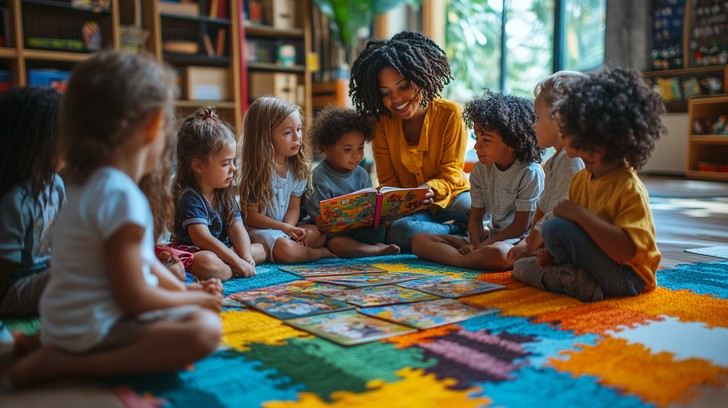
As a busy mom, incorporating an “Emotion-Themed Storytime” into your routine can be both a bonding experience and a teaching moment. Picture this: snuggling on the couch with your toddler, a cozy blanket, and a book that brings emotions to life. Choose stories that explore feelings like joy, sadness, anger, and surprise. Books like “The Way I Feel” by Janan Cain can be a great start.
While reading, ask your little one questions like, “How do you think the character feels?” or “What makes you feel happy?” This not only makes storytime interactive but also helps them articulate their emotions better. 🌟 Remember to use expressive voices and facial expressions to make the experience more engaging.
- Select a book with vibrant illustrations and simple language.
- Pause to discuss the emotions displayed in the story.
- Encourage your child to share personal experiences related to the emotions.
These sessions can enhance your child’s emotional vocabulary and empathy, while also giving you insight into their world. It’s a win-win for both of you!
Remember, every story read is a step towards nurturing a well-rounded, emotionally intelligent child. Keep turning those pages, mama! 📚❤️
5. Dance and Feelings
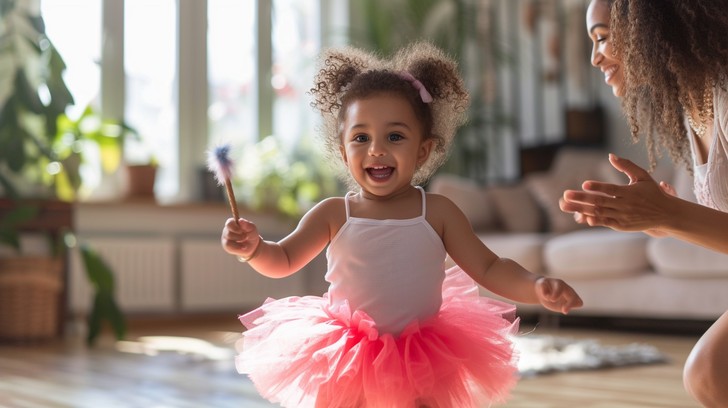
Dancing isn’t just for fun; it’s a magical way to help toddlers express their feelings through movement. Imagine a rainy afternoon where you and your little one turn the living room into a dance floor. As you groove to the beat, introduce the concept of dancing out different emotions—twirl with joy or stomp with frustration. This playful activity not only enhances their emotional vocabulary but also boosts physical coordination. 💃🕺
From a mom’s perspective, creating a playlist with songs that evoke various emotions can be a lifesaver. For example, a lively tune like “Happy” by Pharrell Williams can encourage smiles and laughter, while a mellow song can help them express calmness or sadness. Engage your child by asking them, “How does this song make you feel?” and encourage them to show you through their dance moves.
- Start with a mix of upbeat and slow songs.
- Demonstrate simple dance moves for different emotions.
- Encourage your toddler to mimic or create their own moves.
- Discuss the feelings each song might bring up.
Through this activity, both you and your child benefit. You’ll enjoy quality bonding time, while your toddler gains a fun outlet for emotional expression.
Remember, the goal is not to perfect the moves but to embrace the joy of expression. Every dance session is a step towards nurturing your toddler’s emotional world. Keep dancing and discovering together! 🎶😊
6. Mindful Color Play

For an engaging and calming activity, try introducing your toddler to mindful color play. As a mom, I’ve found it incredibly rewarding to watch my little one’s creativity blossom while they also learn to focus and relax. Start by gathering a selection of crayons or markers in a variety of colors. Encourage your child to pick a color that represents how they’re feeling today, and let them freely draw or color on a large sheet of paper.
Here’s a simple step-by-step guide to get started:
- Set up a cozy color station with paper, coloring tools, and a comfy seat.
- Play soft, soothing music to create a calming atmosphere. 🎶
- Invite your toddler to choose colors that express their mood.
- Encourage them to share what their artwork means to them.
Through this mindful practice, children learn to express their emotions creatively, improving their emotional intelligence. Plus, it can be a moment of peace for you too, as you watch their imagination unfold.
Embrace these colorful moments as an opportunity to bond and nurture your child’s emotional development. Remember, every stroke of color is a step towards building a more emotionally aware future. 🌈
7. Sensory Exploration Walk

Embarking on a sensory exploration walk can be a delightful adventure for both you and your toddler. As a mom, I found that simply stepping outside with the intention of engaging all senses transformed our ordinary walks into extraordinary experiences. 🐾🌿
Start by choosing a familiar path or a nearby park. Encourage your little one to touch leaves, smell flowers, and listen to the birds. Ask open-ended questions like, “What does the bark feel like?” or “Do you hear any insects?” These moments spark curiosity and help your child build a connection with nature.
- Prepare a small “discovery kit” with a magnifying glass and a container for tiny treasures.
- Wear comfortable shoes and clothes that can get a bit messy.
- Allow your toddler to lead the way, stopping whenever something piques their interest.
For parents, these walks are a wonderful opportunity to slow down and appreciate the world through your child’s eyes. It’s also a chance to bond while fostering your toddler’s observational skills and emotional awareness.
Remember, the goal is not to rush but to explore and enjoy the moment. With each walk, you’ll both discover new wonders, making every outing a cherished memory. Keep your hearts open, and let the adventure unfold naturally. 🌈
8. Feelings Treasure Hunt
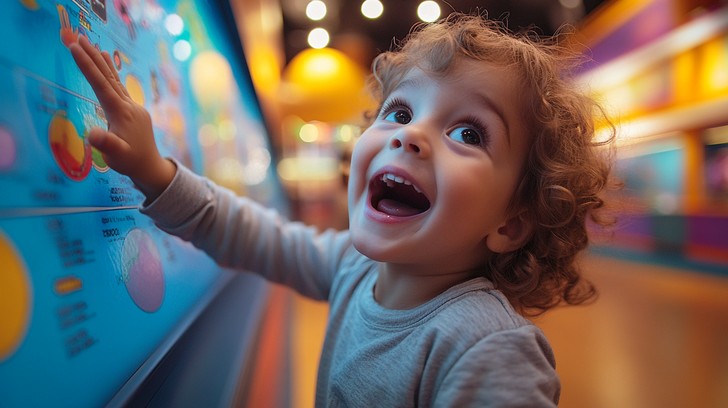
Transform your home into a world of discovery with a “Feelings Treasure Hunt.” This activity encourages toddlers to explore and express their emotions while having fun. One mom shared how she scattered colorful cards with different emotion faces around her living room, turning ordinary playtime into a heartfelt adventure. Her little one giggled with delight, racing to find each ‘treasure’ and match it with real-life situations.
Here’s how you can create your own treasure hunt:
- Draw or print out emotion faces, such as happy, sad, surprised, and angry. 🖍️
- Hide these cards around your home in easy-to-find places.
- Guide your toddler to find each card and encourage them to share a time they felt that emotion.
- Celebrate each discovery with a high-five or a hug! 🤗
This activity not only helps toddlers recognize and label their emotions, but it also opens up channels of communication between you and your child. It’s a playful way to build emotional intelligence and strengthen your bond.
By turning learning into a game, you’re nurturing a sense of curiosity and emotional awareness. Remember, every small step in understanding emotions is a big leap in your toddler’s development. Keep the adventure going and enjoy the treasure trove of feelings together! 🌈
9. Emotion Puppets Play
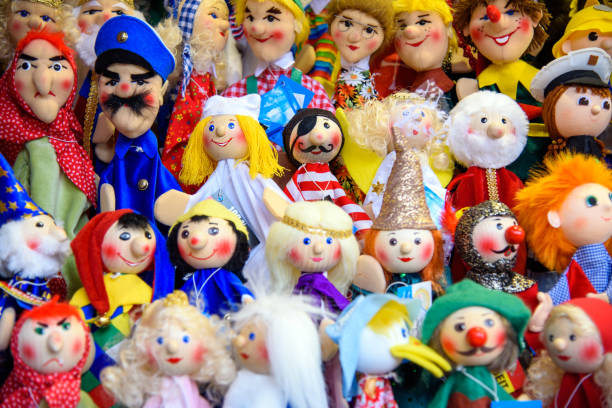
Emotion puppets are a delightful way to help toddlers express and understand their feelings. Imagine Lisa, a busy mom of two, who found herself struggling to explain emotions to her youngest. She decided to create simple puppets using socks and markers, drawing different facial expressions on each one. This turned into a playful tool for her toddler to explore emotions like happiness, sadness, and surprise.
To get started, gather some basic materials:
- Old socks or paper bags
- Markers or crayons
- Craft supplies like googly eyes and felt
Craft these puppets together with your child, allowing them to choose colors and features. Once made, initiate a puppet show where each puppet expresses an emotion. Encourage your child to act out scenarios with the puppets, discussing why the puppet might feel a certain way.
The benefits are twofold: children learn to articulate their feelings, and parents gain insights into their child’s emotional world. Plus, it’s a wonderful bonding activity! 🎭
Remember, the goal is to make emotions less intimidating and more relatable. With each puppet show, you’re building a foundation of empathy and understanding. It’s these precious moments that create a nurturing environment for your little one’s emotional growth. 🌟
10. Nature Feelings Journal

Encourage your toddler’s emotional vocabulary by starting a “Nature Feelings Journal” together. On a sunny Saturday morning, Sarah, a mom of two, took her toddler for a walk in their neighborhood park. They collected leaves, pebbles, and flowers, talking about how each item made them feel. This simple activity transformed into a bonding experience, as they later glued these treasures into a little journal, each accompanied by a few words about their emotions.
To create your own Nature Feelings Journal, follow these steps:
- Take a nature walk with your toddler, allowing them to pick up items they find interesting. 🌿
- Discuss how each item makes them feel (e.g., a smooth pebble might feel calming).
- Back home, glue these items into a journal, and write a word or two describing the feelings.
Engaging in this activity helps your child connect with their emotions and develop mindfulness. For parents, it’s a delightful way to understand your child’s feelings better.
Remember, nurturing emotional awareness through nature not only strengthens your child’s emotional intelligence but also creates lasting memories. Embrace these moments of growth and connection! 🌟
11. Kindness Sharing Circle
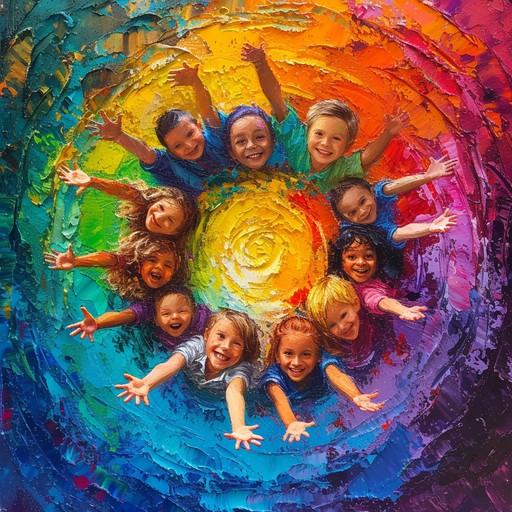
Creating a “Kindness Sharing Circle” is a heartwarming way to nurture empathy and compassion in your toddler. Imagine gathering your little one with a few friends or family members, each taking turns to share a kind word or a positive experience from their day. This simple activity can be a powerful tool to build social-emotional skills.
From a mom’s perspective, it might look like this: picture a cozy living room, perhaps with a few plush toys scattered about. Encourage your toddler to start the circle by sharing something they did that was kind, like helping a sibling or sharing a favorite toy. As each person shares, your child learns the value of kindness and the joy it brings.
- Gather in a circle with your toddler and a few others.
- Prompt your toddler to think of something kind they did or witnessed.
- Encourage each participant to share their own kind act or story.
- Discuss how those actions made everyone feel.
Parents will find that these circles not only teach toddlers about kindness but also open up opportunities for deeper family connections. By modeling and reinforcing positive interactions, you set the stage for developing lifelong social skills.
Remember, the goal is to create a safe space for sharing and learning. With consistent practice, your toddler will start to recognize and appreciate acts of kindness more readily. 🌟
12. Music Mood Moments
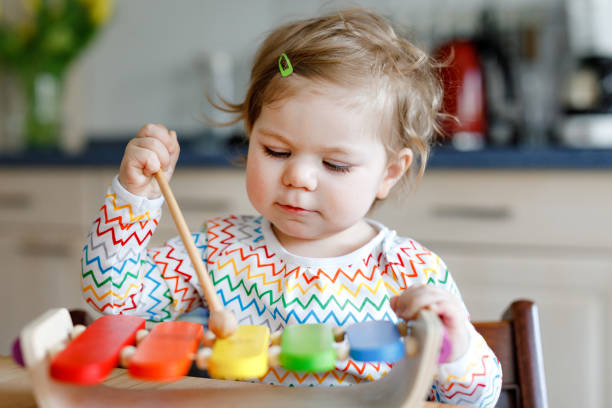
Embracing the power of music can do wonders for a toddler’s emotional development. Imagine a rainy afternoon where Lisa, a mom of a lively three-year-old, turns to her favorite playlist. She plays a soothing melody that instantly changes the atmosphere, calming her little one from a whirlwind of emotions to a serene explorer of sound.
Incorporating “Music Mood Moments” into daily routines is simple and rewarding. Here’s how you can get started:
- Morning Grooves: Begin the day with upbeat tunes to set a positive tone. Dance together, letting your child express joy through movement.
- Calm-Down Sessions: Use gentle music during nap or bedtime to create a peaceful environment that helps your child unwind.
- Emotion Exploration: Play different genres and discuss feelings. Ask, “How does this song make you feel?” to encourage emotional expression.
These moments are beneficial for both parents and children as they foster a shared emotional vocabulary and strengthen bonds. Plus, music can be a playful distraction from tantrums, offering a harmonious way to navigate tough times.
Remember, it’s not about perfect rhythms but enjoying the dance of emotions together. So, grab your toddler, turn on the tunes, and let the music lead the way to emotional growth. 🎶❤️
13. Feelings Faces Collage
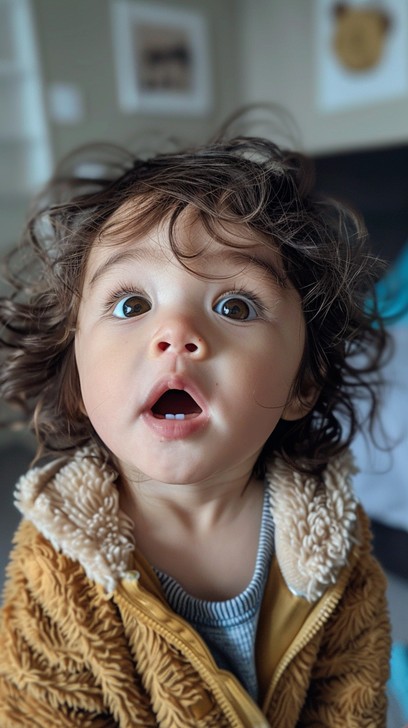
Creating a “Feelings Faces Collage” is a delightful way to help toddlers recognize and express their emotions. As a mom, I found this activity incredibly rewarding for both my little one and myself. It’s simple and fun, yet profoundly effective in nurturing emotional intelligence.
Start by gathering pictures from magazines or printed images of different facial expressions: happy, sad, angry, surprised, and more. 🤔😊😢 Get your toddler involved in cutting out the faces (with child-safe scissors) and sorting them into categories. This not only hones their fine motor skills but also sparks discussions about what each face might be feeling.
- Collect a variety of facial expressions from magazines or printouts.
- Discuss each expression with your toddler, asking questions like, “When do you feel like this?”
- Help your child glue the faces onto a large sheet of paper, creating a collage.
- Label each face with the corresponding emotion.
By engaging in this activity, parents can gain insights into their child’s emotional world, fostering a deeper connection. Children, in turn, learn to articulate their feelings, which can greatly reduce tantrums and misunderstandings.
Remember, the goal is to create a safe space for emotional exploration. Celebrate each new discovery with enthusiasm, reinforcing that all feelings are valid and important. 🤗 By nurturing this understanding, you’re setting the stage for a lifetime of healthy emotional expression.
14. Emotion Charades Fun

Emotion Charades is a delightful way to help your toddler understand and express their feelings. As a mom, I’ve found this game not only fun but also an enlightening experience for both my child and me. Picture a family evening where everyone takes turns acting out emotions such as joy, sadness, or surprise. The giggles and bonding that ensue are priceless! 🎭
To get started, create simple emotion cards. Each card should depict a facial expression or describe an emotion. Then, gather your little ones and let the charades begin!
- Choose an emotion card and act it out without speaking.
- Encourage your toddler to guess the emotion.
- Discuss the emotion—ask questions like, “When do you feel this way?”
This activity not only enhances your child’s emotional vocabulary but also strengthens their empathy and communication skills. Watching your toddler learn and grow through play is incredibly rewarding. Plus, you’ll likely find yourself learning new things about your child’s emotional world! 🌟
Remember, the goal is not just to guess but to connect. With each round, your family will cultivate deeper understanding and stronger bonds. Keep fostering these precious connections, and enjoy every moment of this heartwarming journey! ❤️
15. Storytelling with Emotions
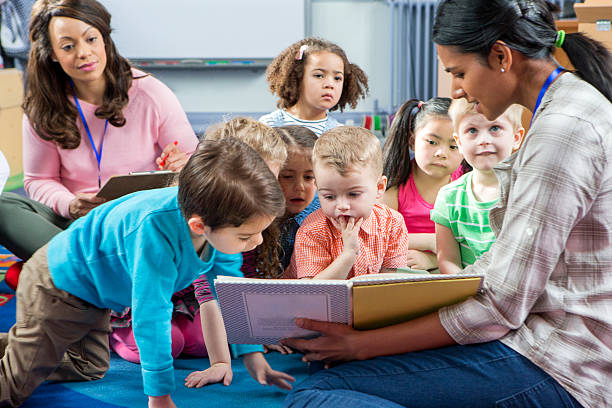
One of the most engaging ways to help toddlers understand emotions is through storytelling. Recently, I tried this with my little one, and it was such a rewarding experience. We chose a simple storybook and focused on the characters’ facial expressions and body language. As we turned each page, I asked questions like, “How do you think this character feels?” and “What makes you feel happy like this?” This not only helped my toddler recognize emotions but also encouraged empathy.
Here’s how you can create your own storytelling session:
- Select a book with clear illustrations of emotions.
- Read the story aloud, pausing to discuss key emotional moments.
- Encourage your child to mimic the expressions and talk about times they’ve felt the same way.
Parents benefit too, as these sessions open up lines of communication and build a deeper connection with your child. It’s a beautiful way to bond and learn together. 😊
Remember, the goal is not to rush but to savor these moments of learning and growth. Celebrate each small step your child takes in understanding and expressing their emotions. You’re doing a fantastic job! 🌟
16. Calm Corner Setup
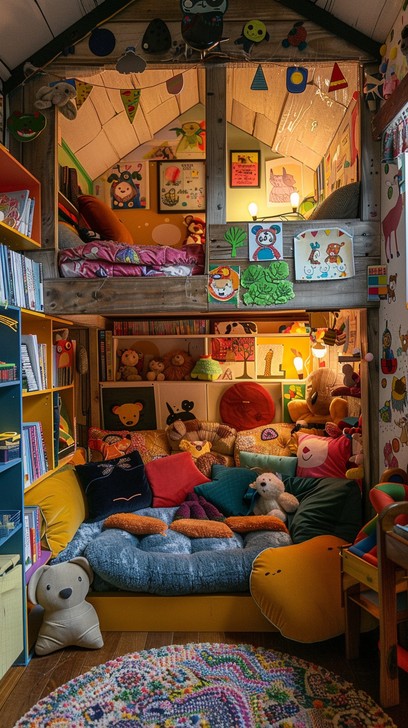
Creating a “Calm Corner” in your home can be a game-changer for managing your toddler’s emotional outbursts. Imagine a cozy nook, filled with soft pillows, a small tent, or a blanket fort where your little one can retreat when feelings become overwhelming. This space becomes their personal haven for self-regulation, encouraging independence and emotional growth.
As a mom, I’ve seen firsthand how a well-thought-out Calm Corner can transform tantrums into teachable moments. Start by choosing a quiet area in your home. Add comforting items like a favorite stuffed animal, calming books, or sensory toys such as squishy balls or a pinwheel. You can even include a small basket with flashcards that depict different emotions to help your toddler identify and express how they’re feeling.
- Designate a space that’s easily accessible.
- Fill it with comforting and sensory-friendly items.
- Introduce the space during a calm moment, explaining its purpose.
- Encourage your child to use it whenever they feel upset.
The benefits extend beyond your toddler’s newfound coping skills. As a parent, you gain a tool to redirect energy constructively, reducing stress and fostering a peaceful environment at home. 🏡
Remember, nurturing emotional intelligence early on sets the stage for a lifetime of resilience. Celebrate each small step your toddler takes in learning to manage their emotions. 🌟
17. Feelings Bingo Game
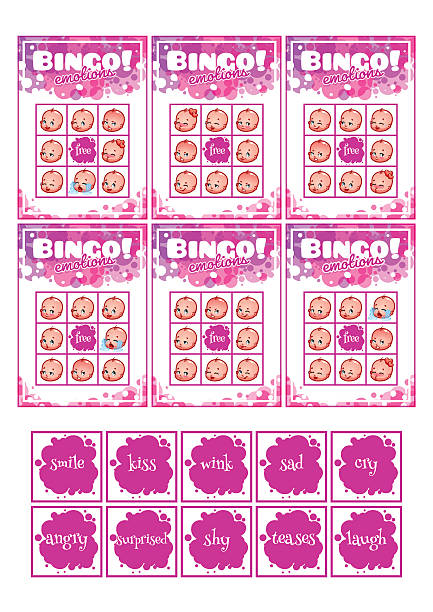
Imagine a cozy afternoon where you and your toddler are gathered around the kitchen table, ready to explore a world of emotions with a fun game of Feelings Bingo. This game not only keeps your little one entertained but also helps them identify and express different emotions in a playful way.
As a mom, you can easily create a Feelings Bingo board using colorful pictures of happy, sad, angry, and surprised faces. Your toddler will love pointing out the emotions as you call them out, enhancing their emotional vocabulary while giggling with every match. 🎨
- Prepare bingo cards with various emotion faces.
- Use stickers or small objects as markers.
- Encourage your child to mimic the emotions for a fun experience.
Playing Feelings Bingo offers several benefits. It strengthens your child’s emotional intelligence and gives you a window into their world, helping you understand their feelings better. Plus, it’s a fantastic way to bond and create lasting memories. 🧡
Remember, the goal is to make learning about emotions a joyful adventure. Celebrate every little win with hugs and high-fives, knowing that you’re nurturing a kind, empathetic human being. 🌟
18. Mindful Snack Time
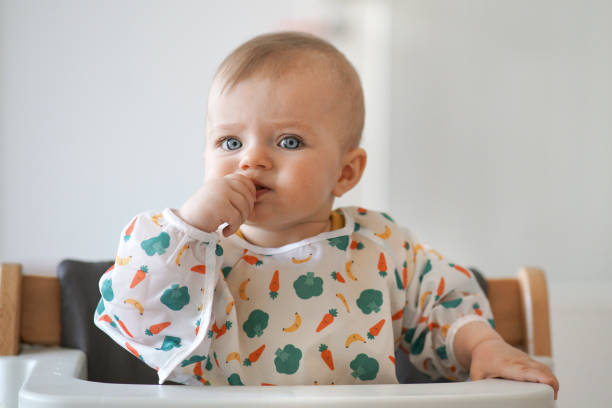
Transform snack time into a mindful moment by engaging your toddler’s senses. As a mom, I found this practice invaluable for slowing down and savoring the everyday moments with my child. Start by selecting a variety of snacks—think colorful fruits, crunchy veggies, or even a handful of nuts if allergies aren’t a concern. Encourage your toddler to explore the textures, colors, and smells of their food before taking a bite.
Here’s how you can make snack time mindful and meaningful:
- Invite your toddler to choose their snack. This fosters decision-making skills and independence.
- Guide them to notice the vivid colors and shapes. Ask questions like, “What color is your apple?” 🍏
- Encourage them to describe the texture and sound as they chew. Is it crunchy or soft? Loud or quiet?
- Take a moment to express gratitude for the food. This instills a sense of appreciation and mindfulness.
By turning snack time into a sensory experience, you’re nurturing your child’s ability to be present while also promoting healthy eating habits. It’s a win-win for both of you!
Embrace these peaceful moments together, and watch as your toddler learns to appreciate the little things. This mindful practice not only enriches their social-emotional development but also strengthens your bond. Remember, the magic often lies in the simple, shared experiences. 🍎💛
19. Emotion Sorting Activity

Engaging toddlers in an “Emotion Sorting Activity” can be a delightful and educational experience. Imagine Sarah, a mom of two, who uses this activity to help her son, Leo, express his emotions. She gathers a few colorful emotion cards, each depicting different facial expressions like happiness, sadness, and surprise. Together, they explore these emotions, discussing what might cause each feeling and sorting them into categories.
- Create Emotion Cards: Draw or print various facial expressions on cards. Include emotions like joy, anger, and calmness.
- Discuss and Sort: Sit with your child and talk about each emotion. Encourage them to relate the emotions to real-life situations.
- Use Props: Incorporate toys or stuffed animals to act out scenarios, helping your toddler understand context. 🧸
By identifying and categorizing emotions, children learn to recognize and articulate their own feelings. This fosters emotional intelligence and empathy, crucial life skills that benefit both parent and child.
Remember, it’s perfectly normal if your toddler doesn’t grasp every emotion right away. Celebrate small successes and enjoy these bonding moments. You’re nurturing a compassionate, self-aware little human. 🌟
20. Feelings Dress-Up Play
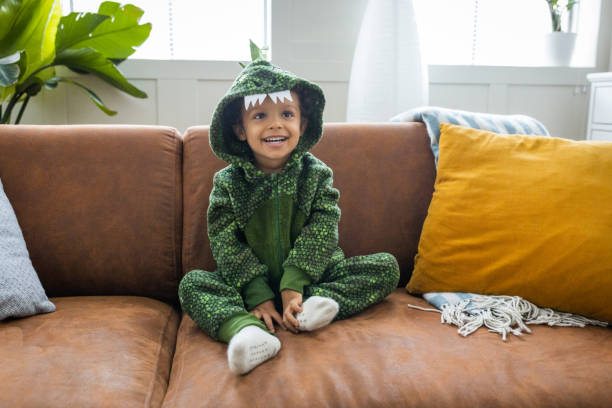
Transforming into different characters can be a powerful way for toddlers to explore emotions. With a simple dress-up activity, you can turn your living room into a stage for empathy and expression. Imagine watching your little one donning a firefighter’s hat and racing to “save” their toy animals—this is more than play; it’s storytelling that fosters understanding and emotional growth.
Here’s how you can create a meaningful dress-up experience:
- Gather a variety of costumes, from everyday outfits to imaginative attire like superhero capes or animal masks.
- Encourage your toddler to pick a character and ask questions like, “How does a firefighter feel when they help?” or “What makes a superhero brave?”
- Join in the fun! Act out scenarios where your child needs to solve a problem or comfort a ‘sad’ teddy bear.
By engaging in these activities, children learn to label and express their emotions, enhancing their social-emotional skills. Plus, it’s a delightful way for parents to connect with their children, sharing laughter and understanding.
Feeling understood and supported through shared play strengthens your bond and boosts your child’s confidence in expressing themselves. 🌟 Embrace these moments as opportunities to nurture empathy and creativity, knowing that you’re building a strong emotional foundation for your child.
As we wrap up our exploration of over 20 impactful social-emotional activities for toddlers, let’s quickly revisit the essence of what we’ve discovered. From engaging in role-playing and storytelling to exploring the wonders of sensory play and mindfulness exercises, each activity is carefully designed to nurture empathy, resilience, and emotional intelligence in your little ones.
Now, imagine the joy and confidence your toddler will experience as they grow emotionally adept and socially aware through these fun and creative endeavors. By incorporating these activities into your routine, you’re not just fostering essential life skills but also creating precious moments of connection and understanding.
Feeling inspired to embark on this rewarding journey? Save or pin this article now so you can easily revisit these activities whenever you need a dose of inspiration or a fresh idea. Let this be your go-to guide as you weave a tapestry of emotional growth and joy in your child’s life.
Remember, every moment spent nurturing your toddler’s emotional world is a step towards a brighter, more compassionate future. You’ve got this, and we’re here to support you every step of the way! 🌟

Hi, I’m Sarah West, the voice behind She Is a Good Mommy and a proud mom of two. Through this blog and my Pinterest community (@SheIsAGoodMommy), I share practical parenting hacks, fun toddler activities, and tips for balancing motherhood with self-care.
Parenting isn’t easy, but with positivity, patience, and practical strategies, it can be incredibly fulfilling. My goal is to support fellow moms with ideas and encouragement while reminding you to prioritize your well-being—you deserve it, Mama!

